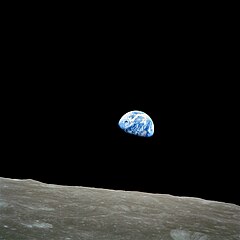
Human rights are moral principles or norms for certain standards of human behaviour and are regularly protected in municipal and international law. They are commonly understood as inalienable, fundamental rights "to which a person is inherently entitled simply because she or he is a human being" and which are "inherent in all human beings", regardless of their age, ethnic origin, location, language, religion, ethnicity, or any other status. They are applicable everywhere and at every time in the sense of being universal, and they are egalitarian in the sense of being the same for everyone. They are regarded as requiring empathy and the rule of law and imposing an obligation on persons to respect the human rights of others, and it is generally considered that they should not be taken away except as a result of due process based on specific circumstances.

The United Nations Convention on the Law of the Sea (UNCLOS), also called the Law of the Sea Convention or the Law of the Sea Treaty, is an international agreement that establishes a legal framework for all marine and maritime activities. As of May 2023, 168 countries and the European Union are parties.

The law of war is the component of international law that regulates the conditions for initiating war and the conduct of hostilities. Laws of war define sovereignty and nationhood, states and territories, occupation, and other critical terms of law.

Cultural diversity is the quality of diverse or different cultures, as opposed to monoculture. It has a variety of meanings in different contexts, sometimes applying to cultural products like art works in museums or entertainment available online, and sometimes applying to the variety of human cultures or traditions in a specific region, or in the world as a whole. It can also refer to the inclusion of different cultural perspectives in an organization or society.

The Outer Space Treaty, formally the Treaty on Principles Governing the Activities of States in the Exploration and Use of Outer Space, including the Moon and Other Celestial Bodies, is a multilateral treaty that forms the basis of international space law. Negotiated and drafted under the auspices of the United Nations, it was opened for signature in the United States, the United Kingdom, and the Soviet Union on 27 January 1967, entering into force on 10 October 1967. As of August 2023, 114 countries are parties to the treaty—including all major spacefaring nations—and another 22 are signatories.

Space law is the body of law governing space-related activities, encompassing both international and domestic agreements, rules, and principles. Parameters of space law include space exploration, liability for damage, weapons use, rescue efforts, environmental preservation, information sharing, new technologies, and ethics. Other fields of law, such as administrative law, intellectual property law, arms control law, insurance law, environmental law, criminal law, and commercial law, are also integrated within the space law.

Colonization of the Moon is a process or concept employed by some proposals for robotic or human exploitation and settlement endeavours on the Moon. Settling of the Moon is, therefore, a more specific concept of lunar habitation, for which the broader concept of colonization is often used as a synonym, a use that is contested in the light of colonialism.
The Agreement Governing the Activities of States on the Moon and Other Celestial Bodies, better known as the Moon Treaty or Moon Agreement, is a multilateral treaty that turns jurisdiction of all celestial bodies over to the participant countries. Thus, all activities would conform to international law, including the United Nations Charter.
The Proclamation of Masterpieces of the Oral and Intangible Heritage of Humanity was made by the Director-General of UNESCO starting in 2001 to raise awareness of intangible cultural heritage and encourage local communities to protect them and the local people who sustain these forms of cultural expressions. Several manifestations of intangible heritage around the world were awarded the title of Masterpieces to recognize the value of the non-material component of culture, as well as entail the commitment of states to promote and safeguard the Masterpieces. Further proclamations occurred biennially. In 2008, the 90 previously proclaimed Masterpieces were incorporated into the new Representative List of the Intangible Cultural Heritage of Humanity as its first entries.

Cultural heritage is the heritage of tangible and intangible heritage assets of a group or society that is inherited from past generations. Not all heritages of past generations are "heritage"; rather, heritage is a product of selection by society.
Global commons is a term typically used to describe international, supranational, and global resource domains in which common-pool resources are found. Global commons include the earth's shared natural resources, such as the high oceans, the atmosphere and outer space and the Antarctic in particular. Cyberspace may also meet the definition of a global commons.
The Convention on the Protection of the Underwater Cultural Heritage is a treaty that was adopted on 2 November 2001 by the General Conference of the United Nations Educational, Scientific and Cultural Organization (UNESCO). The convention is intended to protect "all traces of human existence having a cultural, historical or archaeological character" which have been under water for over 100 years. This extends to the protection of shipwrecks, sunken cities, prehistoric art work, treasures that may be looted, sacrificial and burial sites, and old ports that cover the oceans' floors. The preservation of underwater cultural heritage is significant as it allows for the retelling of numerous historical events. As part of its duty to conduct scientific research and provide continuous education on the importance of underwater cultural heritage, UNESCO strives to maintain these sites for the enjoyment of current and future generations. The convention may provide a customary framework to help raise awareness and seek to combat the illegal looting and pirating occurring in waters worldwide. As an international body, member states of the convention agree to work towards the preservation of sunken cultural property within their jurisdiction and the high seas.
Space policy is the political decision-making process for, and application of, public policy of a state regarding spaceflight and uses of outer space, both for civilian and military purposes. International treaties, such as the 1967 Outer Space Treaty, attempt to maximize the peaceful uses of space and restrict the militarization of space.
The Stockholm Declaration of 1972, or the Declaration of the United Nations Conference on the Human Environment, is the first United Nations declaration on the global environment. It consists of 26 principles and led to the creation of the United Nations Environment Programme (UNEP), which laid the foundation for future global environmental governance. The United Nations Conference on the Human Environment was held in Stockholm, Sweden, from June 5–16 in 1972. The 1972 United Nations Conference on the Human Environment signifies the first international effort to place environmental issues at the forefront of global concerns. The Conference sought to recognize the finite nature of Earth's resources and human impacts on the environment. It represented the beginning of a global dialogue on the link between economic growth, the pollution of the environment, and the well-being of humanity. The resulting Stockholm Declaration urged its partnering nations to reduce air, land, and water degradation by integrating science and technology in their development plans. It also called nations to create regulations on wildlife protection, environmental conservation, and population control. While the reception of the ideas in the Declaration generally stayed positive, it received wide criticisms on its practical implementation, especially from developing nations.
The Universal Declaration on the Human Genome and Human Rights is a document that was issued by the United Nations Educational, Scientific and Cultural Organization (UNESCO) at its 29th session in 1997. It was unanimously passed by the seventy-seven national delegations in attendance.

The Universal Declaration on Cultural Diversity is a declaration adopted unanimously by the General Conference of the United Nations Educational, Scientific and Cultural Organization (UNESCO) at its thirty-first session on 2 November 2001. It calls on nations and institutions to work together for the preservation of culture in all its forms, and for policies that help to share ideas across cultures and inspire new forms of creativity. It interprets "culture" in a broad sense and connects the preservation of culture to central issues of human rights. It defines a role for UNESCO as a space in which different institutions can develop ideas on cultural diversity, which has been a theme of many of UNESCO's activities in the years since. The primary audience of the declaration includes UNESCO's member states as well as international and non-governmental bodies, but other organisations and individuals have also been inspired by it.

The Declaration of the First Meeting of Equatorial Countries, also known as the Bogota Declaration, is a declaration made and signed in 1976 by eight equatorial countries, and was an attempt to assert sovereignty over those portions of the geostationary orbit that continuously lie over the signatory nations' territory. These claims have been one of the few attempts to challenge the 1967 Outer Space Treaty, but they did not receive wider international support or recognition. Subsequently, they were largely abandoned.

Future generations are cohorts of hypothetical people not yet born. Future generations are contrasted with current and past generations and evoked in order to encourage thinking about intergenerational equity. The moral patienthood of future generations has been argued for extensively among philosophers, and is thought of as an important, neglected cause by the effective altruism community. The term is often used in describing the conservation or preservation of cultural heritage or natural heritage.
Common But Differentiated Responsibilities (CBDR) is a principle that was formalized in the United Nations Framework Convention on Climate Change (UNFCCC) of Earth Summit in Rio de Janeiro, 1992. The CBDR principle is mentioned in UNFCCC article 3 paragraph 1.., and article 4 paragraph 1. It was the first international legal instrument to address climate change and the most comprehensive international attempt to address negative impacts to global environment. The CBDR principle acknowledges that all states have shared obligation to address environmental destruction but denies equal responsibility of all states with regard to environmental protection.
Cultural expressions are creative manifestations of the cultural identities of their authors. They are treated in the international legal system in terms of cultural rights, intellectual property law and international trade.













